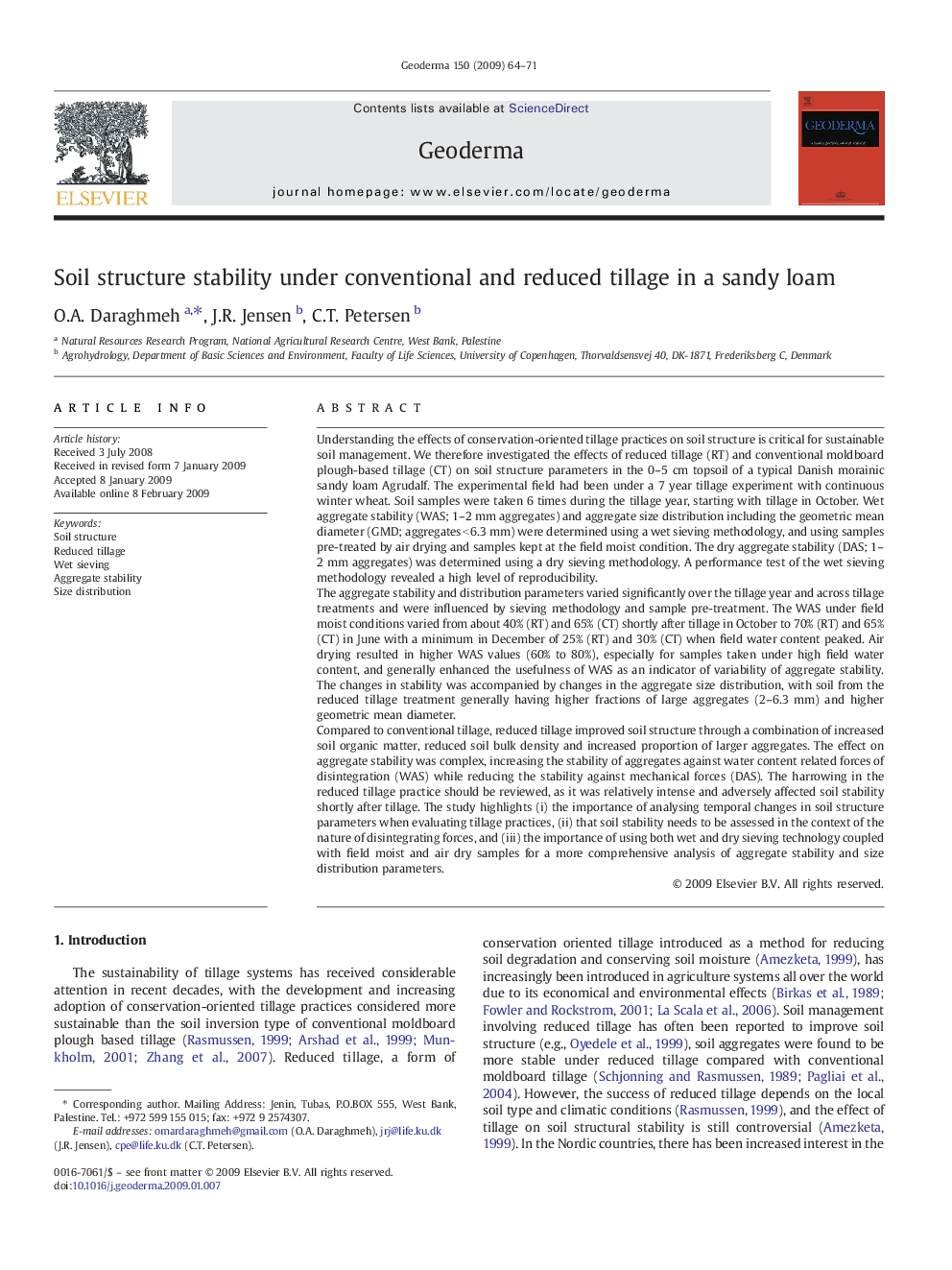| کد مقاله | کد نشریه | سال انتشار | مقاله انگلیسی | نسخه تمام متن |
|---|---|---|---|---|
| 4574750 | 1629534 | 2009 | 8 صفحه PDF | دانلود رایگان |

Understanding the effects of conservation-oriented tillage practices on soil structure is critical for sustainable soil management. We therefore investigated the effects of reduced tillage (RT) and conventional moldboard plough-based tillage (CT) on soil structure parameters in the 0–5 cm topsoil of a typical Danish morainic sandy loam Agrudalf. The experimental field had been under a 7 year tillage experiment with continuous winter wheat. Soil samples were taken 6 times during the tillage year, starting with tillage in October. Wet aggregate stability (WAS; 1–2 mm aggregates) and aggregate size distribution including the geometric mean diameter (GMD; aggregates < 6.3 mm) were determined using a wet sieving methodology, and using samples pre-treated by air drying and samples kept at the field moist condition. The dry aggregate stability (DAS; 1–2 mm aggregates) was determined using a dry sieving methodology. A performance test of the wet sieving methodology revealed a high level of reproducibility.The aggregate stability and distribution parameters varied significantly over the tillage year and across tillage treatments and were influenced by sieving methodology and sample pre-treatment. The WAS under field moist conditions varied from about 40% (RT) and 65% (CT) shortly after tillage in October to 70% (RT) and 65% (CT) in June with a minimum in December of 25% (RT) and 30% (CT) when field water content peaked. Air drying resulted in higher WAS values (60% to 80%), especially for samples taken under high field water content, and generally enhanced the usefulness of WAS as an indicator of variability of aggregate stability. The changes in stability was accompanied by changes in the aggregate size distribution, with soil from the reduced tillage treatment generally having higher fractions of large aggregates (2–6.3 mm) and higher geometric mean diameter.Compared to conventional tillage, reduced tillage improved soil structure through a combination of increased soil organic matter, reduced soil bulk density and increased proportion of larger aggregates. The effect on aggregate stability was complex, increasing the stability of aggregates against water content related forces of disintegration (WAS) while reducing the stability against mechanical forces (DAS). The harrowing in the reduced tillage practice should be reviewed, as it was relatively intense and adversely affected soil stability shortly after tillage. The study highlights (i) the importance of analysing temporal changes in soil structure parameters when evaluating tillage practices, (ii) that soil stability needs to be assessed in the context of the nature of disintegrating forces, and (iii) the importance of using both wet and dry sieving technology coupled with field moist and air dry samples for a more comprehensive analysis of aggregate stability and size distribution parameters.
Journal: Geoderma - Volume 150, Issues 1–2, 15 April 2009, Pages 64–71